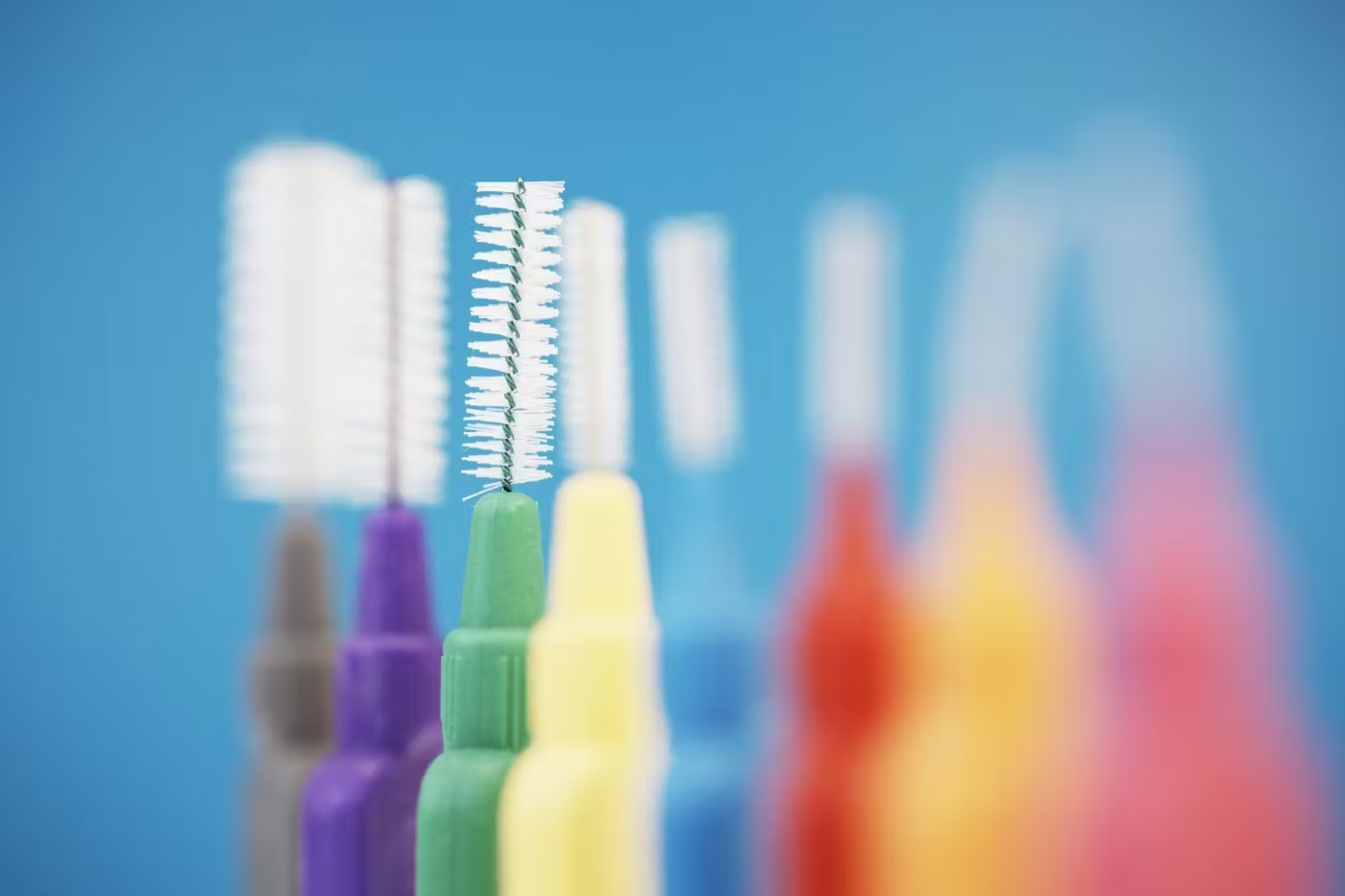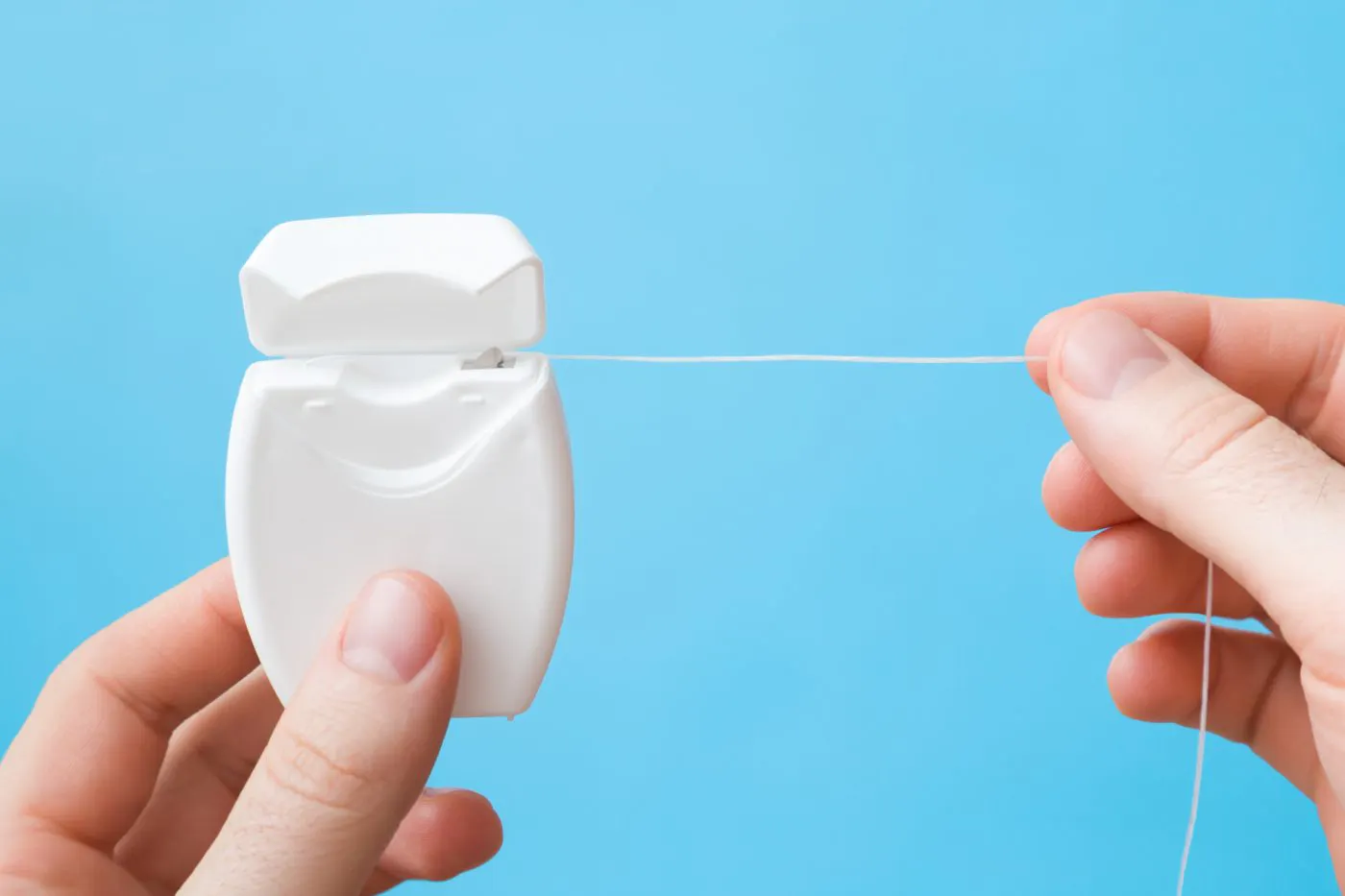When the floss reaches your gumline, curve it into a C-shape against one tooth until you feel resistance. Hold the floss against the tooth, gently stroking the side of the tooth, moving the floss away from the gum. Repeat on the other side of the gap, along the side of the next tooth.
When flossing, it’s always best to keep to a regular pattern. Start at the top and work from left to right, then move to the bottom and again work from the left to right. This way you're less likely to miss any teeth.
If you find flossing very tricky or don’t have nimble fingers then you may find the floss holders are useful and easier, although they are not as thorough as normal floss.
Similarly, to when you first use interdental brushes, when you first floss your gums may be tender and bleed a little, but this is all completely normal in moderation. Carry on flossing and your gums should become healthier after a few days and stop bleeding. If your gums are still regularly bleeding after a few days, contact your dental team and they can check if you’re flossing correctly.
Good dental health begins with you, by following these tips on how to brush in-between your teeth, and following our guide on how to brush your teeth properly, you can keep your mouth clean and healthy, reducing plaque build-up and gum disease. For any other questions at all, contact your local practice on 01479 810301 and we’ll be happy to help.







